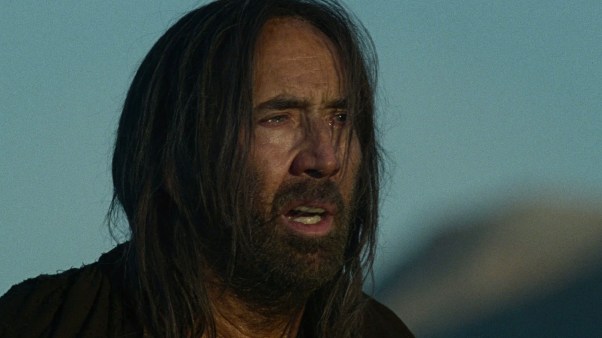Recently my wife started reading Winnie the Pooh to me. She had read it to our children 35 years ago, and I had overheard parts of it. But she thought it would be good if I got it whole and firsthand before it was too late.
One evening while she was reading, I was watching the autumn light leak out of the mountain lake that is our front yard and letting the words of the story drift through my consciousness. Suddenly I was fully awake: the blurred world in which I teach and write on Christian spiritual theology came into crisp focus. I saw the people I was working with in a fresh way.
Jan had just completed chapter 8 in which the childlike animals had been assembled by Christopher Robin for an adventure—they were off to discover the North Pole. It is a meandering tale in which everyone takes everything with complete seriousness, although no one understands much of what is going on. Each character contributes something essential to the quest. The world is large with meaning, and no one is left out—but no one is sure what the North Pole is, not even Christopher Robin who proposed the expedition.
Along the way little Roo falls into a stream and needs rescuing—everyone pitches in. Pooh picks up a pole and fishes him out. The emergency over, the animals talk it over while Pooh stands there with the pole in his hands. Christopher Robin then says,
"Pooh … where did you find that pole?"
Pooh looked at the pole in his hands.
"I just found it," he said, "I thought it ought to be useful. I just picked it up."
"Pooh," said Christopher Robin solemnly, "the Expedition is over. You have found the North Pole!"
"Oh!" said Pooh.
The animals go on with their desultory, haphazard conversation for a while until Christopher Robin finally gets them back to attending to the North Pole that Pooh had discovered.
They stuck the pole in the ground, and Christopher Robin tied a message on to it,
North Pole
Discovered By Pooh
Pooh Found It.
Then they all went home again . …
What I so suddenly "saw" as I was listening to Jan read was the culture in which I live, peopled with engaging characters out looking for a vaguely defined spirituality (the "North Pole"). Every once in a while one of them picks up something and someone says, "That's it!" Sure enough, it does look like "it." And someone, usually a "spiritual authority" (Christopher Robin), hangs a sign on it: "Spirituality." And then everyone goes home again, until the next expedition is proposed.
People are attracted to "spirituality" in increasing numbers these days. Fresh expeditions for the "North Pole" set out almost daily from most places in the country. (The "East Pole" and the "West Pole" are also options). As I listened to the story that late autumn evening, I recognized many of the "characters" whom I love and admire so much but am not content to leave as is: I want to honor every detail of their childlike charm, but I also want to show them both what and where the "North Pole" is. I want to lead them to Jesus.
Fundamental to the Christian task of dealing with our meaning-hungry, spirit-thirsty, God-curious world is to teach and preach the Holy Scriptures as the Revelation of Life, the life defined and created by Jesus. This has always been necessary, but there is a contemporary urgency to the task in these times in which we are flooded with "spiritualities" that, ignorant of Jesus, are developed from the various and sundry experiences of Christopher Robin and friends, especially Pooh, "a bear of very little brain."
If the Holy Spirit through Scripture as a whole both forms the company and provides the map to the "North Pole," the Gospel of Mark is as good a place as any to take our bearings. The entire canon of Scripture is our comprehensive text, but Mark as the first Gospel holds a certain primacy. It is the basic text for Christian spirituality.
Formed by gospel No one had ever written a Christian gospel before Mark wrote his. He created a new genre. It turned out to be a form of writing that quickly became both foundational and formative for the life of church and Christian.
The Bible as a whole comes to us in the form of narrative, and it is within this large, somewhat sprawling narrative that Mark writes his gospel. Stories invite us into a world other than ourselves, and, if they are good and true stories, a world larger than ourselves. Bible stories are good and true stories, and the world that they invite us into is the world of God's creation and salvation and blessing.
This is in contrast to the ancient preference for myth making, which turns us into spectators of the supernatural. It is also in contrast to the modern preference for moral philosophy that puts us in charge of our own salvation. "Gospel story" is a verbal way of accounting for reality that, like its subject—the Incarnation—is simultaneously divine and human. It reveals something we could never come up with on our own by observation or experiment or guess; and at the same time, it engages, it brings us into the action as recipients and participants without dumping the responsibility on us for making it turn out right.
There can hardly be any question about the intent of Saint Mark: the plot and emphasis and meaning of Jesus is his death.
This has great implications for our spirituality, for the form itself protects us against two major ways we go off the rails: becoming frivolous spectators, clamoring for new and more exotic entertainment out of heaven; or, becoming anxious moralists, putting our shoulders to the wheel and taking on the burdens of the world. The very form of the text shapes responses in us that make it hard to become a mere spectator or a mere moralist. This is not a text that we master, it is one that we are mastered by.
Spirituality is the attention we give to our souls, to the invisible interior of our lives that is the core of our identity, these image-of-God souls that comprise our uniqueness and glory. Spirituality would appear to be a wonderful thing, and our initial exclamation is most likely, "Would that all the Lord's people were so engaged!" But 20 centuries of experience in spirituality qualifies our enthusiasm considerably. In actual practice, it turns out to be not so wonderful. When you look at our history, it is no wonder that spirituality is so often treated with suspicion, and not infrequently with outright hostility. For in actual practice, spirituality very often develops into neurosis, degenerates into selfishness, becomes pretentious, turns violent. How does this happen?
The short answer is that it happens when we step outside the gospel story and take ourselves as the basic and authoritative text for our spirituality; we begin exegeting ourselves as a sacred text. We don't usually throw the gospel out; we merely put it on the shelf and think that we are honoring it by consulting it from time to time as an indispensable reference work.
Our spiritual guides tell us, "You are wonderful, glorious beings, precious souls. Your aspirations for holiness and goodness and truth are splendid. But you are not the content of spirituality; God revealed in Jesus is that. You need a text to read and study and learn from—here's your text, the gospel of Jesus Christ. Start with Mark's gospel as your basic text."
We open the text and read the story of Jesus, an odd kind of story. It tells us very little of what interests us in a story. We learn virtually nothing about Jesus that we really want to know. There is no description of his appearance. Nothing about his origin, friends, education, family. How are we to evaluate or understand this person? And there is very little reference to what he thought, to how he felt, his emotions, his interior struggles.
At some point or other we realize that this is a story about God—and about us. Even though Jesus is the most referred-to person in the story, there is a surprising reticence in regard to Jesus. Jesus is the revelation of God, so we are always being faced in Jesus with what we are faced with in God: most of what is here we don't get, we don't see, don't understand. We don't figure Jesus out, we don't search Jesus out, we don't get Jesus on our terms. It follows that neither do we get God on our terms. As a story, it is a most unsatisfying story.
And then we realize that our attention has been drawn away from ourselves and is on Jesus, God revealed in Jesus. True spirituality, Christian spirituality, takes attention off of ourselves and focuses it on another, on Jesus.
There are others in the story, of course, many others—the sick and hungry, victims and outsiders, friends and enemies. But Jesus is always the subject. No event and no person appears in this story apart from Jesus. Jesus provides both context and content for everyone's life. Spirituality—the attention we give to our souls—turns out in practice (when we let Saint Mark shape our practice) to be the attention we give to God revealed in Jesus. The text trains us in such perception and practice. Line after line, page after page—Jesus, Jesus, Jesus. None of us provides the content for our own spirituality; it is given to us; Jesus gives it to us. The text allows for no exceptions.
The death of Jesus As we read this text we soon discover that the entire story funnels into the narration of the events of a single week of Jesus' life, the week of his passion, death, and resurrection. And of these three items, death gets the most detailed treatment. If we are asked to say as briefly as possible what Mark's gospel consists of, we must say, "the death of Jesus."
That doesn't sound very promising, especially for those of us who are looking for a text by which to live, a text by which to nurture our souls. But there it is. There are 16 chapters in the story. For the first eight, Jesus is alive, strolling unhurriedly through the villages and backroads of Galilee, bringing others to life.
And then, just as he has everyone's attention, he starts talking about death. The last eight chapters of the Gospel are dominated by death talk.
The death announcement also signals a change of pace. As the story is told through the first eight chapters, there is a leisurely and meandering quality to the narration. But with the death announcement, that changes: now he heads straight for Jerusalem. Urgency and gravity and destination now characterize the narration. The direction changes, the pace changes, the mood changes. Three times Jesus is explicit: he is going to suffer and be killed and rise again (8:31; 9:31; 10:33).
And then it happens: death. Jesus' death is narrated carefully and precisely. No incident in his life is told with this much detail. There can hardly be any question about Mark's intent: the plot and emphasis and meaning of Jesus is his death. This is a carefully defined death. It is defined as voluntary. Jesus did not have to go to Jerusalem; he went on his own volition. He gave his assent to death. This was not accidental death; this was not an unavoidable death.
It is defined as sacrificial. He accepted death that others might receive life, "his life a ransom for many" (Mark 10:45; cf. 14:23-24).
And it is defined in the company of resurrection. Each of the three explicit death announcements concludes with a statement of resurrection. The gospel story as a whole concludes with a witness to resurrection. This does not make it any less a death, but it is a quite differently defined death than we are accustomed to dealing with.
Tragedy and procrastination are the words that characterize our culture's attitude toward death. The tragic view of death is a legacy of the Greeks. The Greeks wrote with elegance of tragic deaths—lives that were caught up in the working out of large, impersonal forces, lives pursued with the best of intentions, but then enmeshed in circumstances that canceled the intentions, circumstances indifferent to human heroism or hope. The death of Jesus is not tragic.
The procrastinated death is a legacy of modern medicine. In a culture where life is reduced to heartbeat and brainwave, death can never be accepted as such. Since there is no more to life than can be accounted for by biology—no meaning, no spirituality, no eternity—increasingly desperate attempts are made to put it off, to delay it, to deny it. The death of Jesus is not procrastinated.
It is essential that we counter our culture by letting Mark's storytelling shape our understanding of death and eventually come to understand our own death within the rich dimensions and relations of Jesus' story.
The ascetic and the aesthetic Right at the center of Mark's text is a passage that I designate as the "spirituality" of the text: 8:27-9:9. It is set at the center of the gospel story so that one half of the Gospel, the multiple Galilean evocations of life, falls symmetrically on one side, and on the other side, the single-minded travel to Jerusalem and death.
This passage consists of two stories. The first story, Jesus' call for renunciation as he and his disciples start out on the road to Jerusalem, provides the ascetic dimension in spirituality. The second story, Jesus' transfiguration on Mount Tabor, provides the aesthetic dimension in spirituality.
The stories are bracketed at either end by affirmations of Jesus' true identity as God among us: first, Peter saying, "You are the Christ, the Son of the living God"; second, the voice out of heaven saying, "This is my beloved son, listen to him." Human testimony at one end, divine attestation at the other.
These stories are organically connected. They are the two-beat rhythm in a single spiritual theology, not two alternate ways of doing spiritual theology. The two stories bring together the ascetic and aesthetic movements, the no and the yes that work together at the heart of spiritual theology.
The ascetic. This is God's no in Jesus. Jesus' words are succinct and stark: "If any want to become my followers, let them deny themselves and take up their cross and follow me" (8:34). The ascetic life deals with life on the road.
The verbs that leap out of the sentence and pounce on us are "deny yourself" and "take up your cross." Renunciation and death. It feels like an assault, an attack. We recoil.
But then we notice that these two negatives are bracketed by the positive verb "follow," first as an infinitive, then as an imperative. "If anyone wants to follow" opens the sentence; "you follow me" concludes it. Jesus is going someplace; he invites us to come along. There is no hostility in that. It sounds, in fact, quite glorious: the great verb "follow" sheds glory on the negative verbs that call for renunciation and death.
There is always a strong ascetic element in true spiritual theology. Following Jesus means not following your impulses and appetites and whims and dreams, all of which are sufficiently damaged by sin to make them unreliable guides for getting anyplace worth going. Following Jesus means not following the death-procrastinating, death-denying practices of a culture that, by obsessively pursuing life under the aegis of idols and ideologies, ends up with a life that is so constricted and diminished that it is hardly worthy of the name.
Grammatically, the negative, our capacity to say no, is one of the most impressive features of our language. The negative is our access to freedom. Only humans can say no. Animals can't say no. Animals do what instinct dictates. The judicious, well-placed no frees us from many a blind alley, many a rough detour, frees us from debilitating distractions and seductive sacrilege. The art of saying no sets us free to follow Jesus.
Following Jesusmeans not following your impulses and appetites and whims and dreams.
If we adhere carefully to Mark's text, we will never associate the ascetic with the life-denying. Ascetic practice sweeps out the clutter of the god-pretentious self, making ample space for Father, Son, and Holy Spirit; it embraces and prepares for a kind of death that the culture knows nothing about, making room for the dance of resurrection. Whenever we are around someone who is doing this well, we notice the lightness of step, the nimbleness of spirit, the quickness to laughter.
The aesthetic. Alongside Mark's ascetic is his aesthetic. This is God's yes in Jesus. Peter, James, and John see Jesus transfigured before them on the mountain into cloud-brightness in the company of Moses and Elijah and hear God's blessing, "This is my Son, the Beloved, listen to him!" (9:7). The aesthetic deals with life on the mountain. The word beauty does not occur in the story, but beauty is what the disciples experienced, and what we find ourselves experiencing.
There is always a strong aesthetic element in true spiritual theology. Climbing the mountain with Jesus means coming upon beauty that takes our breath away. Staying in the company of Jesus means contemplating his glory, listening in on this vast, intergenerational conversation consisting of law and prophet and gospel that takes place around Jesus, hearing the divine confirmation of revelation in Jesus. When God's Spirit makes his appearance, we recognize the appearance as beautiful.
Now here is the thing about the transfigured Jesus. Jesus is the form of revelation, "and the light does not fall on this form from above and from outside, rather it breaks forth from the form's interior" (Hans Urs von Balthasar, The Glory of the Lord, vol. 1, p. 151). The only adequate response that can be made to light is to keep our eyes open, to attend to what is illumined—adoration.
The aesthetic impulse in spiritual theology has to do with training in perception, acquiring a taste for what is being revealed in Jesus. We are not good at this. Our senses have been dulled by sin. The world, for all its vaunted celebration of sensuality, is relentlessly anesthetic, obliterating feeling by ugliness and noise, draining the beauty out of people and things so that they are functionally efficient, scornful of the aesthetic except as it can be contained in a museum or flower garden. Our senses require healing and rehabilitation so that they are adequate for receiving and responding to visitations and appearances of Spirit, God's Holy Spirit.
These bodies of ours with their five senses are not impediments to a life of faith; our sensuality is not a barrier to spirituality but our only access to it. When John wanted to assure some early Christians of the authenticity of his spiritual experience, he did it by calling on the witness of his senses of sight, hearing, and touch (1 John 1:1). In his opening sentence, he calls on the witness of his senses seven times.
Mark sets this story of glorious affirmation in immediate juxtaposition to his story of stern negation. He knows that, simple and obvious as it is, it is easy to get it wrong. Peter's initial response in both the ascetic road story and the aesthetic mountain story was wrong.
On the road, Peter tried to avoid the cross; on the mountain, he tried to possess the glory. Peter rejected the ascetic way by offering Jesus a better plan, a way of salvation in which no one has to be inconvenienced. Jesus, in the sternest rebuke recorded in the Gospels, called him Satan. Peter rejected the aesthetic way by offering to build memorials on the mountain, a way of worship in which he could take over from Jesus and provide something hands-on and practical. This time Jesus just ignored him.
Peter's propensity to get it wrong keeps us on our toes. Century after century we Christians keep getting it wrong —and in numerous ways. Every time we get sloppy in reading this text of Saint Mark and leave the company of Jesus, we get it wrong.
One more thing Mark chose to tell us about Jesus as the revelation of God, a full accounting of Jesus' work of salvation. We are invited to become full participants in the story of Jesus and shown how to become such participants. We are not simply told that Jesus is the Son of God; we not only become beneficiaries of his atonement; we are invited to die his death and live his life with the freedom and dignity of participants. And here is a marvelous thing: we enter the center of the story without becoming the center of the story.
Spirituality is always in danger of self-absorption, of becoming so intrigued with matters of soul that God is treated as a mere accessory to my experience. This requires much vigilance. Spiritual theology is, among other things, the exercise of this vigilance.
And for this Mark provides our basic text. The two stories at the center, the road and mountain stories, are clearly proleptic—they anticipate Jesus' crucifixion and resurrection. They immerse us and train us in the ascetic negations and aesthetic affirmations, but they don't leave us there; they cast us forward in faith and obedience to the life that is finally and only complete in the definitive no and glorious yes of Jesus crucified and risen.
Eugene H. Peterson is the James M. Houston Professor of Spiritual Theology at Regent College, Vancouver, British Columbia, Canada, and author of Leap over a Wall: Earthy Spirituality for Everyday Christians (Harper San Francisco, 1997).
Copyright © 1998 Christianity Today. Click for reprint information.










